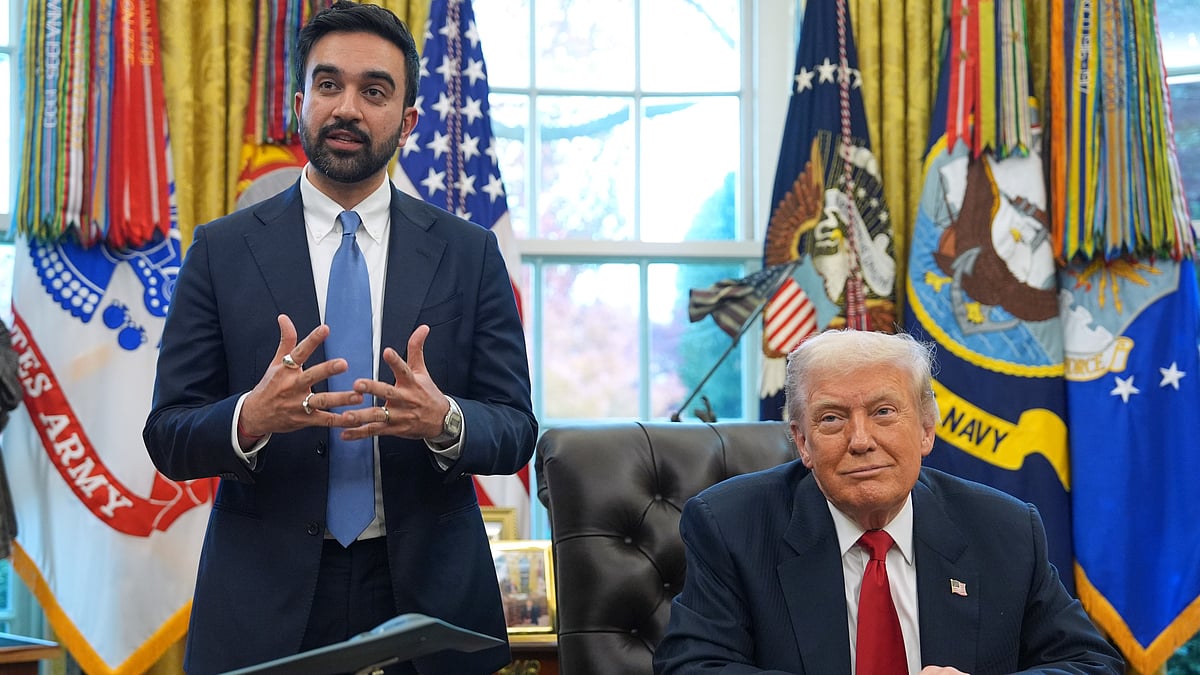World
Oval office stunner: Trump strikes a surprise partnership with Zohran Mamdani
Both set aside ideological differences, pledge cooperation to focus on affordability, crime and housing in New York City

In a political twist few predicted, US President Donald Trump and New York City mayor-elect Zohran Mamdani met in the Oval Office on Friday, 21 November, to signal a new era of cooperation on some of New York City’s most pressing issues. Despite a campaign marked by sharp ideological clashes — Mamdani having previously called Trump a “despot” and Trump branding Mamdani a communist — the two leaders came together to emphasise shared priorities including cost of living, public safety and housing development.
Their meeting stunned observers by projecting an unexpectedly cordial and pragmatic tone. Trump praised Mamdani’s electoral success, calling it “amazing” and commending him for overturning early polls in a hard-fought primary. “He came out of nowhere,” Trump noted, describing Mamdani’s rise as a “great tribute” and expressing hope that the new mayor can lead New York “greater than ever before”. Mamdani returned the goodwill, describing the meeting as “productive” and centered on the shared goal of delivering affordability to the city’s 8.5 million residents.
At the heart of their discussion was the escalating cost of living, a unifying concern for New Yorkers across the political spectrum. Mamdani revealed a surprising electoral crossover: roughly one in ten of his voters had been Trump supporters, he said. Citing conversations with voters throughout Queens, the Bronx, and other neighbourhoods, Mamdani said the phrase voters repeated most was “cost of living, cost of living, cost of living,” with concerns ranging from rising rent and grocery bills to utility costs and childcare expenses. Trump welcomed this admission with a smile, acknowledging and appreciating the shared voters.
Housing policy emerged as a key point of unexpected agreement. Mamdani stressed the need to reform New York’s “inequitable” property tax system to enhance affordability, while Trump endorsed a robust housing construction agenda, saying he wanted “a lot of apartments built” and was surprised to find alignment with Mamdani on this front. They agreed that building more housing stock would help bring rents down. Mamdani made a point to clarify that his calls for property tax reform were focused on fairness rather than race, responding firmly to claims that he advocated “race-based” taxation.
Published: undefined
Ultimately, a safe New York is going to be a great New York… we’re going to work together.Donald Trump
Crime and public safety were another area of convergence. The mayor-elect pledged to maintain the New York police department’s 35,000-officer force and focus law enforcement resources on serious crimes rather than lower-priority issues like mental health calls. Trump praised this approach, emphasising the importance of keeping “known murderers, drug dealers, and other bad actors” off city streets. While immigration enforcement views still diverge, both expressed a shared interest in reducing violent crime and ensuring safety for all residents.
The political symbolism of their meeting did not go unnoticed. Trump marvelled at the intense media interest. He said, “The press has eaten this thing up,” adding that none of his prior meetings with world leaders had generated comparable coverage. For Trump, Mamdani’s meteoric rise — from relative obscurity to mayor-elect — coupled with New York’s critical challenges, made the encounter uniquely compelling.
Reflecting on past adversarial remarks, both leaders showed a willingness to soften their tone. Trump dismissed Mamdani’s characterisation of him as a despot by quipping, “I’ve been called much worse,” while Mamdani emphasised that although they maintained clear differences, their focus was on their “shared purpose” in serving New Yorkers.
This Oval Office dialogue is especially noteworthy given Mamdani’s background as a democratic socialist and vocal progressive who ran on a platform championing social justice, affordability, and sweeping reforms. Trump, whose political brand is conservative and populist, had during the campaign attacked Mamdani’s politics harshly. Yet, in this meeting, both highlighted their emphasis on pragmatic solutions rather than ideological bickering.
Mamdani underscored his campaign’s core message: that politics too often neglects working-class concerns in favour of abstract policy debates. He stated, “We’re looking to deliver for New Yorkers in partnership with the president on the affordability agenda.” For his part, Trump highlighted declining grocery and fuel prices and insisted utility companies like Con Edison must lower rates to help ease burdens on city residents.
Their meeting signals a potential new chapter in New York politics, where cooperation might supersede division on critical issues like housing, affordability, and safety. With New York grappling with a lengthy homelessness crisis and millions of residents struggling to make ends meet, such bipartisan collaboration is widely seen as a hopeful step.
Nonetheless, points of disagreement remain — particularly on immigration policies and some broader ideological divides. But both Trump and Mamdani expressed a mutual desire to focus on “practical” goals and “getting things done” for New Yorkers, with Trump concluding, “Ultimately, a safe New York is going to be a great New York… we’re going to work together.”
This unexpected alliance — between a former Republican president and a progressive Democratic mayor — underscores the central role that economic anxiety and everyday challenges play in transcending traditional political fault lines. As New York City embarks on this new political era, the success of their partnership could set an important precedent for addressing urban crises through cooperation rather than confrontation.
(Courtesy: 5wh.com)
Published: undefined